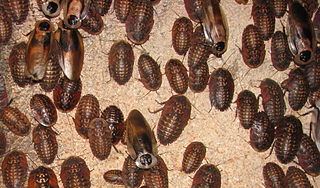
Giant cockroaches, or blaberids, are the second-largest cockroach family by number of species. Mostly distributed in warmer climates worldwide, this family is based on the American genus Blaberus, but much of the diversity is also found in Africa and Asia.

The grasshopper subfamily Acridinae, sometimes called silent slant-faced grasshoppers, belong of the large family Acrididae in the Orthoptera: Caelifera.
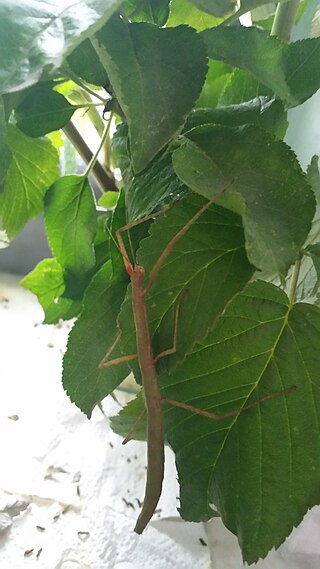
Carausius is a genus of the tribe Lonchodini, in the order Phasmatodea. The genus is in many ways typical of the Phasmatodea in that all species are twig-like in appearance. These species are parthenogenetic.

The Euphasmatodea, also known by its junior synonym Verophasmatodea is a suborder of the Phasmatodea, which contains the vast majority of the extant species of stick and leaf insects, excluding the Timematodea. The oldest record of Euphasmatodea is Araripephasma from the Crato Formation of Brazil, dating to the Aptian stage of the Early Cretaceous.
Mnesilochus is a genus of stick insects in the subfamily Lonchodinae. Species have a known distribution in: Borneo, Philippines, Sumatra.
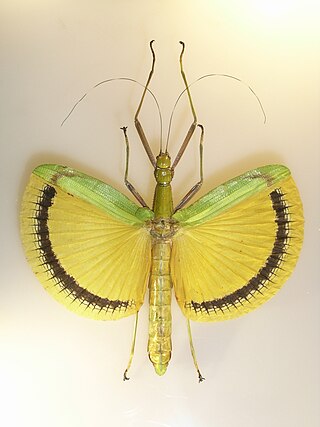
Necrosciinae is a subfamily of the stick insect family Lonchodidae, with its greatest diversity in South-East Asia.

The Phaneropterinae, the sickle-bearing bush crickets or leaf katydids, are a subfamily of insects within the family Tettigoniidae. Nearly 2,060 species in 85 genera throughout the world are known. They are also known as false katydids or round-headed katydids.

Diapheromerinae is a subfamily of the stick insect family Diapheromeridae. They belong to the superfamily Anareolatae of suborder Verophasmatodea.
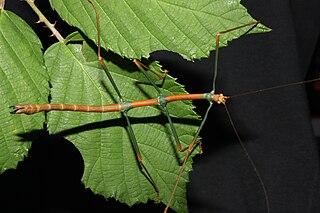
Lonchodes is a genus of stick insects in the family Phasmatidae and the type genus of the family Lonchodidae and tribe Lonchodini. Species have a known distribution that includes tropical Asia and the Pacific.

The Heteropterygidae is a family of stick insects belonging to the suborder Euphasmatodea. Species can be found in Australasia, East and Southeast Asia. About 150 valid species have been described.

Pseudosermyle is a genus of walkingsticks in the family Diapheromeridae. There are more than 20 described species in Pseudosermyle.

Clonaria is an Asian genus of stick insects belonging to the tribe Gratidiini.

The Clitumninae are a sub-family of stick insects in the family Phasmatidae found in Asia. The type genus Clitumnus is now considered a synonym of Ramulus.

The Lonchodinae are a subfamily of stick insects in the family Lonchodidae found in: Australasia, Asia, Africa, Southern America and the Pacific.

The Obriminae are the most species-rich subfamily of the Phasmatodea family Heteropterygidae native to Southeast Asia. It is divided into two tribe.

The Obrimini are the most species-rich tribe of the Phasmatodea family of the Heteropterygidae native to Southeast Asia.

Theramenes is a genus of medium-sized stick insects in the tribe Obrimini, which is native to the Philippines and to the Indonesian Talaud Islands.

The Cladomorphinae are a subfamily of stick insects in the family Phasmatidae. This taxon is particularly well represented in the Neotropical region, but records also exist for Madagascar, Java and the Maluku Islands.
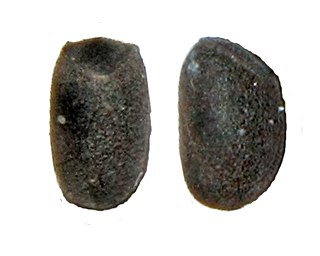
Stenobrimus is a genus of medium-sized stick insects native to the Philippines.

Neohirasea is a genus of stick insects in the tribe Necrosciini, erected by J.A.G. Rehn in 1904. Species has been recorded from temperate and tropical Asia, including: China, India, Japan, Malaysia and Vietnam.


















